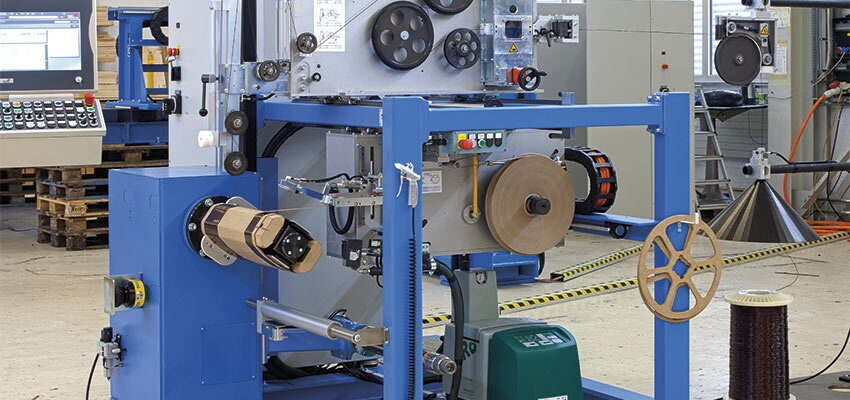
INSULutions® STRIP-Flex K
Abstract Recent testing has proven that the superior mechanical properties of INSULutions® STRIP-Flex K paper from Weidmann, when used together with Tuboly-Astronic’s advanced HV strip...
byKevin M. BIGGIE

Abstract
Recent testing has proven that the superior mechanical properties of INSULutions® STRIP-Flex K paper from Weidmann, when used together with Tuboly-Astronic’s advanced HV strip insulation winding machines, can produce more compact distribution transformer coils at faster speeds than with standard papers on standard winding machines. The high strength and high elongation of INSULutions® STRIP-Flex K allows HV strip insulation winding machines to operate with much higher paper tension, resulting in more compact coils. Compact coils are smaller, lighter, more cost effective and have lower losses. In addition, the machines may be run at much higher speeds and with less interruptions due to fewer insulation breaks, allowing users to increase productivity.
Keywords: cellulose, insulation, high strength, strip winding, distribution transformer
Construction of liquid filled distribution transformer coils
Today’s liquid filled power and distribution transformers utilize the “industry proven” insulation system of cellulose-based solid insulation materials immersed in mineral oil. This system is recognized to be the most cost effective and reliable option for these applications. Weidmann has pioneered the development of specialized cellulose insulation materials, components and systems for transformers starting in the 1920s and has become the global leader in this technical market area. Weidmann continues to invest and innovate in the area of technology for cellulose insulation materials, with another recent example being INSULutions® STRIP-Flex K paper.
In the construction of liquid filled distribution transformer coils, the coils are typically wound in layers. That is, conductor materials are wound in layers, with insulation paper wound between those layers as interlayer insulation. In the High Voltage (HV) winding of distribution transformer coils specifically, the conductor is typically smaller cross-section aluminum or copper wire, wound in layers with interlayer insulation paper between the layers of wire.
HV winding interlayer insulation paper can be applied in different ways, and is usually dependent on the type of HV winding machine being used. In traditional winding machines, the HV interlayer insulation is applied manually between layers, usually as one or two layers of paper that are often the full width of the coil (Fig. 1). In this traditional process, the paper is not wound under tension, and there is limited or no opportunity to vary the thickness of the HV interlayer insulation across the layer. Varying the thickness of the HV interlayer insulation paper is desirable because the electrical potential difference changes across the layer, and changing the insulation thickness accordingly affords the chance for insulation optimization.

Figure 1. Sketch of full width layer insulation technology, one or two layers, with end filler strips







